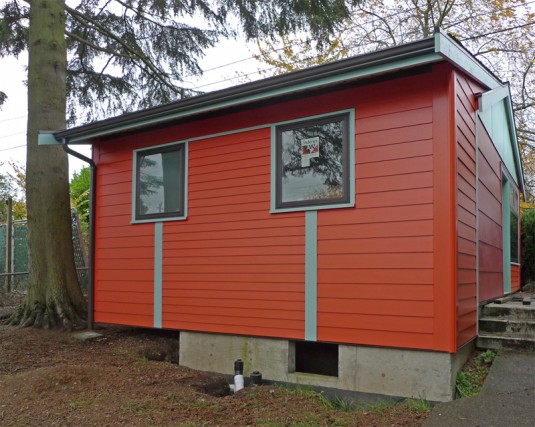Lots of material goes into constructing a home. There are many layers; some that we see and feel others are not visible but are equally important
Let’s start with the inside and work our way out—-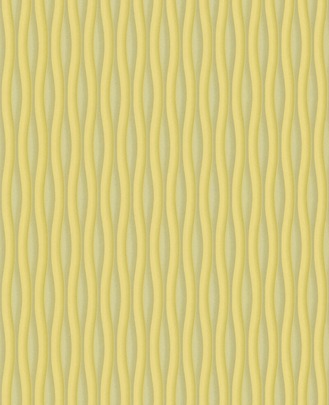
Typically, we see drywall in neutral colors or painted fun hues, possibly covered in wallpaper.
Many live-work-play clients are choosing to install airtight drywall. This drywall is sealed to the framing at its edges, and at openings like electrical boxes so that air doesn’t move through. By reducing uncontrolled air movement, our clients can save energy and feel more comfortable in their homes.
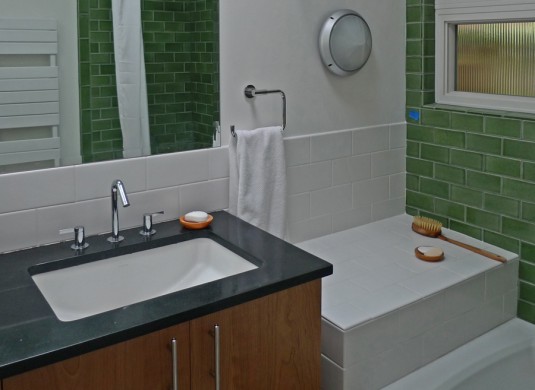 Tile is another material that we use in the bathroom and kitchen and throughout the home. These days it is offered in a wide range of beautiful colors, textures, and recycled options at a variety of price points. Some companies we source from include: Fireclay Tile which is made in the USA, Daltile Modern Dimensions, Ecotech Tile with recycled content.
Tile is another material that we use in the bathroom and kitchen and throughout the home. These days it is offered in a wide range of beautiful colors, textures, and recycled options at a variety of price points. Some companies we source from include: Fireclay Tile which is made in the USA, Daltile Modern Dimensions, Ecotech Tile with recycled content.
Countertop suggestions– Environite, a Seattle regionally made recycled glass material shown here in ebony, and also locally made Ecotop which is a fiber and resin product.
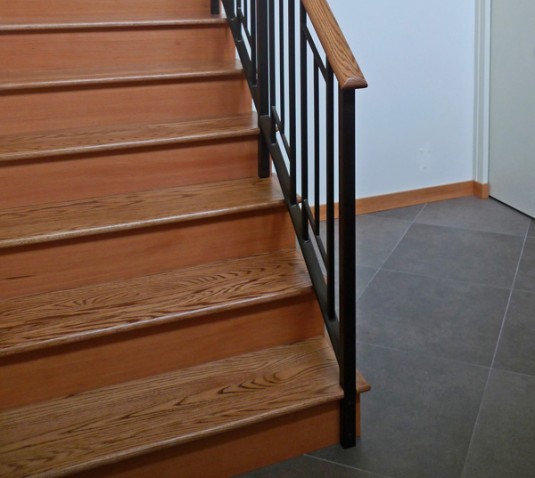 Finished wood is one way we like to add warmth in their homes; whether it’s painted, clear coated or stained. In this example, oak treads and fir risers are used together.
Finished wood is one way we like to add warmth in their homes; whether it’s painted, clear coated or stained. In this example, oak treads and fir risers are used together.
Framing lumber and plywood are another layer of materials. We specify sustainably harvested wood from properly managed forests to help maintain plant and animal habitat and water quality. Forest Stewardship Council (FSC) certified forests provide lumber and plywood that our firm supports.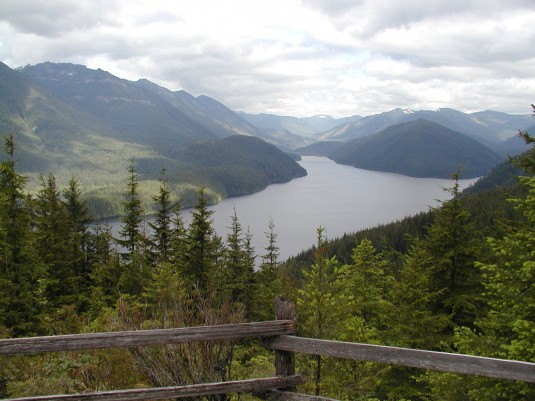
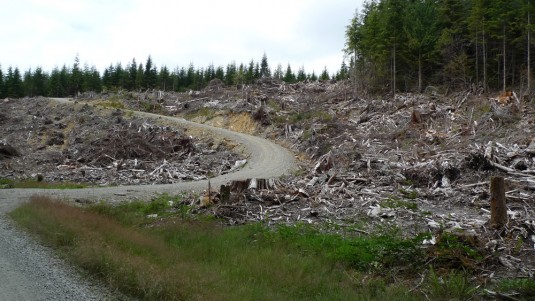
At the top, an FSC managed forest in the Cedar River Watershed. At the bottom, a typical clearcut, not FSC managed.
Insulation is important–dense pack cellulose is a recycled material that helps block air movement through the wall and roof. This helps save energy and money and also adds to the comfort of the homeowners.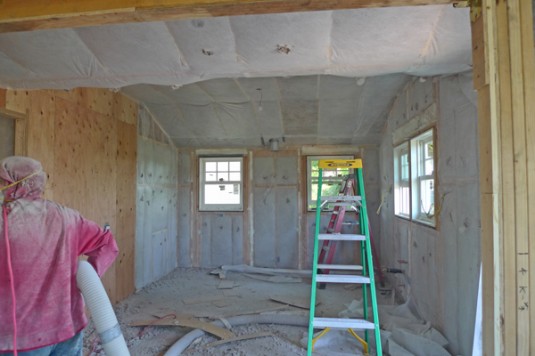
Next we use a vapor barrier–two layers of building paper like 60-minute paper helps the wall shed water but also allows any moisture within the wall to evaporate over time.
 While on the subject of moisture, the airspace is highly important–in a rainscreen siding installation, there will be about a 1/2″ air space that allows airflow between the back of the siding and the vapor barrier. This helps moisture evaporate so it will not be wicked back into the plywood and wall framing. Usually a 1/2″ vertical wood strip called a batten will be fastened over the barrier so the siding can be attached.
While on the subject of moisture, the airspace is highly important–in a rainscreen siding installation, there will be about a 1/2″ air space that allows airflow between the back of the siding and the vapor barrier. This helps moisture evaporate so it will not be wicked back into the plywood and wall framing. Usually a 1/2″ vertical wood strip called a batten will be fastened over the barrier so the siding can be attached.
Siding is a major component as we move toward the outside of the home. This material can be traditional like bevel cedar siding that is back primed. This requires more maintenance, but is a beautiful material. Or it could be a cement fiber siding such as Hardie siding. We can use this when designing a traditional or a contemporary home. We enjoy creating panels of different exposure of lap siding to mix it up a little for a contemporary residential appearance.
Style, budget, sustainability, weather, existing conditions are just a few of the factors that impact the variety of materials that we recommend and specify on our projects. Some of our clients have experience remodeling homes and have a wealth of ideas to share. Others are first timers and are looking for a trusted guide to help determine which material options meet their needs. Peeling back the layers of a home reveals that there are many options and approaches to designing and building a home that is long lasting, easy to maintain, beautiful and supports one’s lifestyle and values. Have questions about your project? Please contact us anytime via info@live-work-play.net or 206-726-0077.


